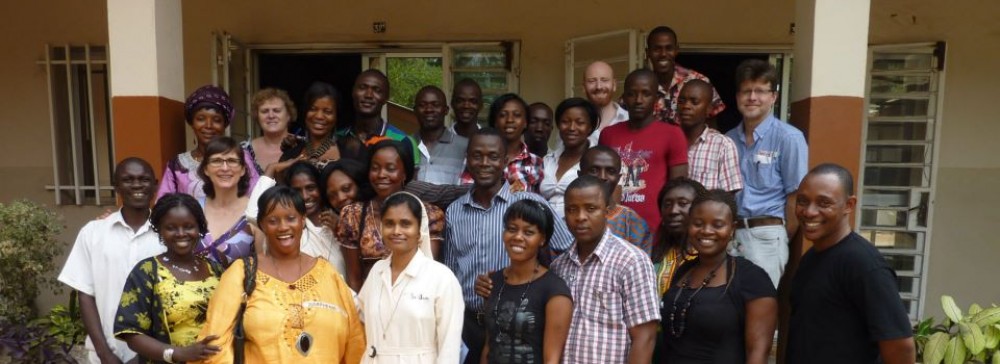On Thursday 10th September 2015, Dr Richard Fay (http://www.manchester.ac.uk/research/richard.fay/) and I travelled to the University of Sussex for a conference organised by the European Association of Social Anthropologists (EASA). The title of the conference was: ‘MAGic2015: Anthropology and Global Health: interrogating theory, policy and practice’. We had a paper accepted to a panel that was focusing on ‘Mental health and anthropology: local challenges to Global Mental Health’ (http://www.nomadit.co.uk/easa/magic2015/panels.php5?PanelID=3617). For the unacquainted, Global Mental Health (GMH) has been defined as an area of practice and research concerned with reducing inequities and inequalities in the provision of mental health services across the globe.
The paper that Richard and I jointly presented was entitled: ‘Global Mental Health: The importance of contextual sensitivity and appropriate methodologies’ (see: https://www.dropbox.com/s/zpysr5rxhn0y6tp/MAGic%20Conference%20Presentation%20-%20White%20%26%20Fay%20-%20September%202015.pdf?dl=0).
This paper reflected on fieldwork we conducted in Uganda in April 2015 as part of Case Study 1 of the ‘Researching Multingually at the Borders of Language, the Body, Law and the State’ research project (http://researching-multilingually-at-borders.com/). This fieldwork was intended to contribute to the development of culturally appropriate psychosocial interventions for Lango-speaking people in the Lira Region of Northern Uganda. The Langi people, along with Acholi and Alur, are members of the Western Nilotic language group, and combined these ethnic groups constitute the bulk of the population living in Northern Uganda. Together they comprise about 15% of the overall population of Uganda (http://www.africa.upenn.edu/NEH/u-ethn.html)
The fieldwork involved the completion of Module 1 of a rapid qualitative assessment called Design Implementation Methodology and Evaluation (DIME) that was used to explore the types of problems that people living in the Lira region experience and the types of tasks that they are frequently required to complete for themselves, for their families and their communities. The fieldwork was completed in conjunction with a local Lango speaking research team that included 12 research assistants (who conducted interviews with local stakeholders) and 2 research supervisors who helped coordinate the research activities.
Our conference paper focused on a particular priority problem reported by the participants living in the Lira region. The Lango language description of this problem was ‘peko me tam’ which literally translates as ‘problems with thoughts’. At the end of the research process, this was translated as ‘anxiety and stress’ by the research team (and verified by a Lango language expert). The ramifications of this act of translation are potentially profound. Over 40 different languages are spoken in Uganda. There has been a tendency to translate local language understanding about distress into English (as a step to providing local people with access to pre-existing, or new developed, forms of treatment often offered by international NGOs). The textbooks used to train mental health professionals in Uganda are also published in English and tend to come from the US or UK. As such, English language descriptions of forms of psychopathology predominate in the training of professional. This has created a context where the global and the local dynamically interact. In the case of peko me tam, it is possible that locally trained professionals and international NGOs could use protocols with Lango-speakers that have been developed to address anxiety and/or stress (concepts which are themselves distinct in the English language and could lead to quite different forms of intervention). The other modules of the DIME approach aim to develop local language assessment measurements and forms of intervention which are more sensitive to local language descriptions of distress.
The paper included some critical reflections on the DIME methodology (developed at John Hopkins University) and some of the challenges that arise when working with the pragmatics of how different languages (Lango, English, Acoli and Swahili) can be strategically employed in day-to-day life in Lira. It is important to understand that the DIME approach was developed to assist in the rapid development of psychosocial interventions in humanitarian crises, and it is not intended as a substitute for detailed ethnographic work. The DIME manual is printed in English, and the training for the local Research Assistants and supervisors was delivered in English. On the otherhand, all interviews were conducted in Lango, and the data was recorded in Lango. No audio recording device was used, with the scribes being expected to record verbatim summary statements spoken by the participants. In stark contrast to the linguistic realities on the ground, the DIME manual specifically states that the research should be conducted in one language only.
A key aspect of our paper was that it problematized the sharp dichotomy that is often drawn between ‘Global’ and ‘Local’ perspectives. Universalist approaches to addressing mental health difficulties across the globe (which advocate a ‘one size fits all’ approach to addressing mental health difficulties) has been critiqued for discounting the potential impact that the diverse beliefs and practices of people living in different cultural contexts have on people’s experience of distress. Such critiques have suggested that scaling-up ‘evidence-based’ biomedical interventions largely developed in the West may serve to undermine or extinguish local forms of support. Conversely, Preservationist arguments that adopt a dioramic and essentialised approach to ‘culture’ can be critiqued on the basis that syncretization (the process by which differing beliefs and practices become integrated) occurs between and within cultures. As such the ‘local’ is situated within the global and the global permeates the local. The paper argues that GMH as an endeavour should not be constrained by either the Universalist or Preservationist approaches, but should instead promote the need for globally-minded practitioners who adopt context-sensitive perspectives in pursuit of appropriate methodologies for GMH. The importance of conducting interdisciplinary research into the languaging of distress will be a very important aspect of this work.
It was an enriching experience to discuss themes that emerged from the paper with the other contributors to the panel and the audience who attended the panel session. I also very much valued the opportunity to catch up with Richard and to benefit from the perspectives that the Researching Multilingually and Translating Cultures (RMTC) Hub (http://researching-multilingually-at-borders.com/?page_id=177) have brought to this work.
